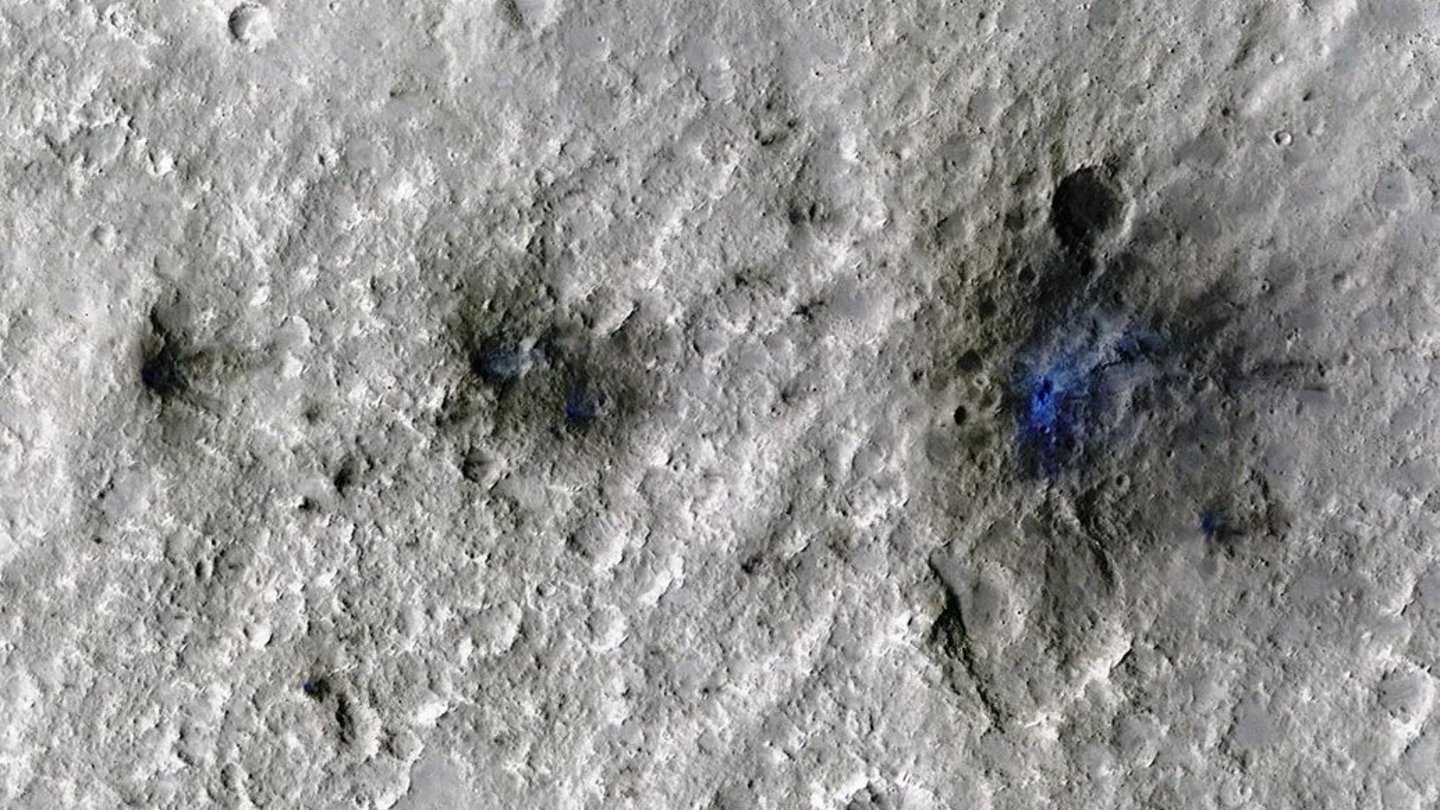More than 300 meteorites larger than 80 centimeters (30 inches) in size hit Mars each year, leaving craters more than eight meters (26 feet) in diameter. This is shown by seismic data sent back to Earth by NASA's InSight mission, which was independently evaluated by two research teams. This means that meteorites hit Mars two to three times more often than previously thought. With the help of these results, it is now possible to determine the age of different regions on Mars more accurately. But the new findings also have great significance for other celestial bodies, the scientists reported in the journals “Science Advances” and “Nature Astronomy.”
Astronomers derive the age of different regions of planetary and lunar surfaces from the number of craters they count: the more craters visible, the younger the surface. This is because impact marks fade over time due to erosion. But in order to determine not only the relative age of a region, but also the absolute age of a region, one must know the number of impacts per year. That's why researchers look for new craters in images taken by space probes, including images of the Martian surface taken by the many missions in Mars orbit.
Extrapolating to the entire surface of the Red Planet, these analyzes show that about 90 new craters larger than eight meters are created on Mars every year. However, this result is subject to many uncertainties, because the entire surface of Mars cannot be permanently observed. For this reason, researchers are looking for other ways to observe the surface of Mars. This is how the InSight space probe came into play, which landed on our neighboring planet in November 2018.
Monitoring impacts on Mars using a seismometer
On board the probe, among other things, is a seismometer – an instrument used primarily to obtain information about the planet's internal structure. Just like on Earth, measuring Martian seismic waves makes it possible to peer inside. But as it turns out, the seismometer not only recorded Martian earthquakes, but also vibrations caused by meteorite impacts. These differ from earthquakes in the characteristic high-frequency vibrations of the Martian soil, and have now been examined in more detail by two research teams.

Three meteorite impacts
An analysis of the InSight data by Geraldine Zenhauser of ETH Zurich and her team provided a surprisingly high value: on average, impacts shake the surface of Mars 362 times a year. In many cases, it was possible to locate the impact zone and thus discover previously overlooked craters in the images. Based on craters found this way alone, there are 280 impacts per year. For the team, this is evidence that high-frequency events are mostly meteorite impacts.
Ingrid Daubar of Brown University in the US and her colleagues confirm this result. When analysing the InSight data, this research group focused on particularly strong impacts – that is, on larger meteorites or impacts in the vicinity of the probe. This means that previous age determinations, which were based primarily on counting craters, are also being tested. “If our results are confirmed, previous models for estimating the age of planetary surfaces will have to be rethought,” says Daubar. And not just for Mars, but for other celestial bodies throughout the solar system.

“Social media evangelist. Baconaholic. Devoted reader. Twitter scholar. Avid coffee trailblazer.”








More Stories
Longest jets in the universe discovered – giant particle streams as long as 140 Milky Way galaxies in a row
New method reveals 307 supernova remnants
Snapchat is upping the ante on augmented reality glasses